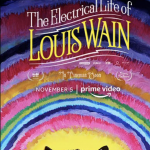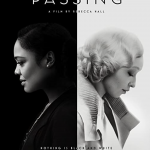During her Christmas holidays with the royal family at the Sandringham estate in Norfolk, England, Diana decides to leave her marriage to Prince Charles.
Pam says:
Academy Award nominated writer Steven Knight takes us behind the closed doors (and over the moat) to a pivotal Christmas weekend as Princess Diana, portrayed by Kristen Stewart, spirals mentally out of control, her awareness of hubby Prince Charles’ affair coming to light. Knight transports us to Her Royal Highness’s mind and we see the world through her eyes.
What could have and perhaps should have been a dramatically charged 72-hour period becomes a slow-moving trudge, painting the poised and eloquent young woman as an emotionally unstable and cowering child. The events of the holiday seem surreal as Diana floats from event to event. The interpersonal interactions, quite sparse, only find a connection when she is with her two young boys or her dresser (Sally Hawkins). Unfortunately, these situations which bring a humanity to the story never really materialize into anything substantial.
The film certainly depicts Princess Diana in a different light as it draws parallel lines between Anne Boleyn and herself. Fact or fiction? We may never know. Director Pablo Larrain, however, stays true to the era as strict attention to detail in wardrobe brings us back to the early ‘90’s. Stewart hones her acting skills in giving us a royal performance as Diana, the soft-spoken, down-to-earth princess who is captured like an animal who has no escape. There’s so much more behind those hurt eyes, but we never get to see the complexities within.
Again, is this based in reality or just an imagination into finding a way to connect Anne Boleyn’s tragic life from centuries ago to our princess of today? With little narrative arc, the story is too thread-bare to keep us interested in this plausible depiction. In turn, Stewart’s ability to then tap into Princess Diana’s humanity and find a more layered persona to portray is thwarted.
1 1/2 Stars
Chuck says:
I can’t say I hated Pablo Larrain’s “Spencer,” but boy did it irritate me. Having made the incisive and daring 2016 biopic “Jackie,” I was expecting something as intriguing and engaging as that film. Alas, that was not to be as the director and screenwriter Steven Knight take a ham-fisted approach in tackling Princess Diana via a story that takes place over three days during the Christmas holiday. Taking great liberties with the truth, as we know it, this effort to give this tortured woman the happy ending she so richly deserved ultimately rings hollow.
Informing us from the start that the movie is “a fable from a true tragedy,” Larrain and Knight allow themselves a great deal of narrative latitude. To be sure, other filmmakers have taken similar approaches to historical figures and events, but it’s the manner in which this story is told that rankles. Christmas Eve Day is the starting point and Diana is late for the traditional holiday festivities the House of Windsor adheres to. Lost, she drives about the countryside, until she stumbles upon her childhood home. Spying a forgotten scarecrow from her youth, she stops to strip it of its coat, revealing the hollow structure beneath. This is one of the many overt pieces of symbolism Larrain uses to examine Diana’s precarious psychological state. That this is the most subtle one, is a problem.
Once she arrives for the festivities, Diana’s trial begins. Convinced she can never meet the high standards and tattered from forever being in the media spotlight, she’s a bundle of nerves and neuroses, her only solace coming from spending time with her two sons, William and Harry (Jack Nielen and Freddie Spry) and her loyal dresser Maggie (Sally Hawkins).
Kristin Stewart is fully committed in her performance, though she speaks in a lilting, whisper throughout to the point of distraction. (I’ll forgive her this transgression as I suspect she was simply following Larrain’s direction) Desperate and on edge throughout, the actress avoids the trap of giving us a broad imitation to provide a sense of humanity to the woman whose fragile identity was fractured by the various demands of her position and the onus of keeping up a sense perfection for an adoring public.
However, it’s the heavy-handed approach Larrain takes that dooms the film, overt symbolism applied with a trowel bogging down the story at every turn. Pheasants, beautiful yet vulnerable, are seen throughout trapped, slaughtered and at one point the subject of a one-sided conversation with Diana who envies the bird, saying “you’re allowed to always wear the same outfit.” Strands of pearls are a constant image of confinement while the presence of Major Alistar Gregory (Timothy Spall), consort to the Queen is an ever-present reminder of impending doom.
However, the most egregiously obvious element in the film is the presence of Anne Boleyn (Amy Manson), another doomed royal whose presence is introduced via a biography of her left on Diana’s bed, which she starts reading. Soon, the historical figure has invaded the princesses’ dreams and then is seen as a haunting vision that warns of her ultimate fate. Gimme a break…
It’s all too obvious to be engaging, an insulting approach that takes the viewer out of the film at every turn. While Quentin Tarantino has made historical revision in the movies an acceptable practice, the imagined happy ending Larrain presents comes off as trite and insincere. Princess Diana deserved a much better fate as well as a more balanced biopic than “Spencer.”
2 Stars




